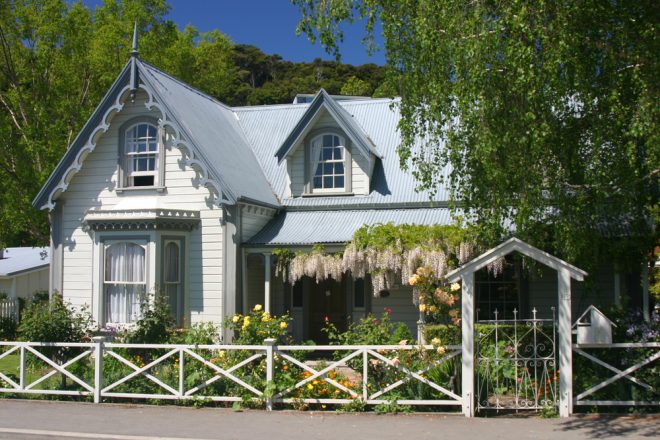웰링턴 지역의 부동산 가치는 코비드 이후 정점 이후 약 20% 하락했습니다.코어로직의 주택 가치 지수에 따르면 현재 웰링턴의 평균 주택 가치는 837,425달러입니다.
분기별 하락폭이 가장 컸던 곳은 웰링턴시가 3.2% 로 가장 컸고, 포리루아 2.7%, 로어허트 2.5%, 카피티 코스트 2.2% 순이었다.어퍼 허트는 0.5% 로 소폭 하락했다.
이에 비해 오클랜드의 평균 주택 가치는 1,095,013달러로, 이는 지난달보다 0.8% 하락한 수치이며, 코비드 이후 최고점보다 20.3% 낮은 수치입니다.그러나 오클랜드의 주택 가격은 한 해 동안 1.8% 상승했습니다.오클랜드 시장도 약세를 보이고 있는데, 여러 지역에서 로드니의 0.4% 에서 오클랜드시의 1.0% 까지 하락폭이 커졌습니다.
부동산 경제학자 켈빈 데이비슨 (Kelvin Davidson) 은 오클랜드가 높은 모기지 금리와 시장에 영향을 미치는 기타 문제에 대처하고 있다고 언급했습니다.또한 오클랜드에는 신규 주택이 많이 건설되고 있어 당분간 부동산 가치를 낮게 유지할 수 있습니다.
와이카토 주 해밀턴의 주택 가격은 지난달보다 0.6%, 지난 분기에는 1.9% 하락했지만 여전히 전년 대비 4% 상승했습니다.이곳의 평균 주택 가치는 737,011달러로, 코로나 이후 최고점보다 11.5% 낮지만 코로나 이전보다는 20.7% 높습니다.
타우랑가의 평균 주택 가치는 925,166달러로 전국에서 두 번째로 높습니다.이는 월별 0.9% 하락한 수치이며, 코로나바이러스 이후 최고점보다 16.7% 감소한 수치이며, 연간 상승률은 0.7% 에 불과합니다.
크라이스트처치의 평균 주택 가격은 매월 0.1%, 분기별로 0.7% 하락하여 691,888달러에 달했습니다.이는 COVID 이후 최고점보다 7.1% 낮은 수치이지만 여전히 연간 4.9% 상승률을 보이고 있습니다.
더니든의 평균 주택 가격은 609,004달러로 가장 낮으며, 이는 지난달보다 0.5%, 코로나 이후 최고점 대비 10.6% 하락한 수치입니다.매년 5.6% 씩 상승했으며, 코로나바이러스 이전 수준보다 11.4% 상승했습니다.
전체적으로 현재 전국 평균 주택 가치는 827,515달러로 2월 대비 약 21,200달러 하락했습니다.부동산 가치는 여전히 2022년 1월 최고점인 982,918달러보다 16% 정도 낮지만, 코비드 이전보다는 약 19% 높습니다.




























































